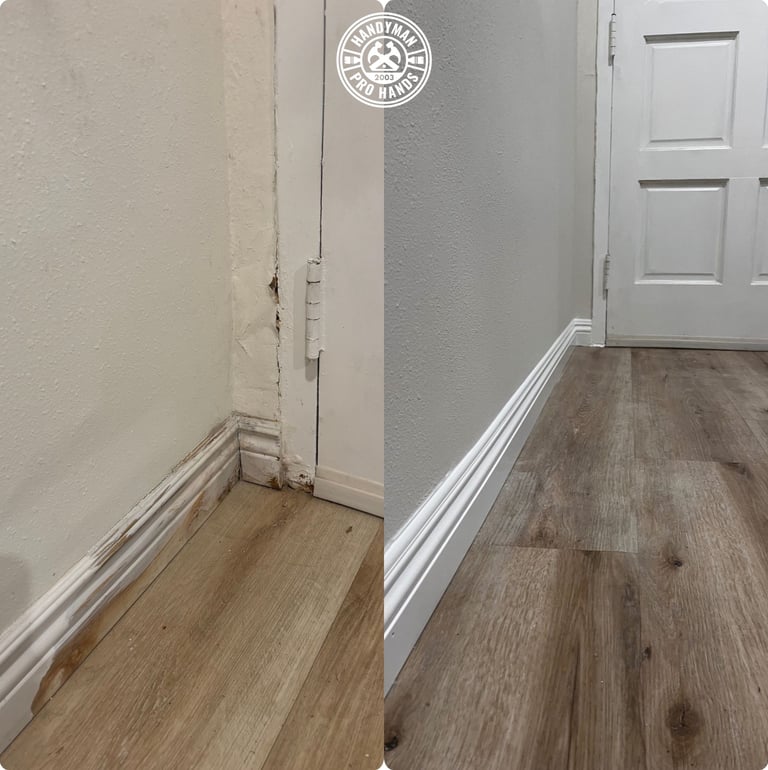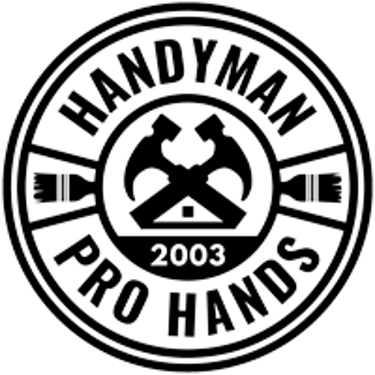Drywall and Baseboard Repair After Water Intrusion Caused by Incorrect Sprinkler Placement Near the Front Door
Water damage inside a home doesn’t always come from roof leaks, plumbing issues, or floods. One of the most overlooked causes in Los Angeles is incorrectly placed lawn sprinklers near entry doors.
WATER, FIRE, MOLD DAMAGEDRYWALLINTERNAL REPAIRSOUR WORKS
11/20/20253 min read


When sprinklers spray directly onto the front door every morning, water gradually penetrates under the threshold, moves behind the baseboards, and travels into the drywall — leading to structural deterioration and visible interior damage.
The project shown in the photos above is a clear example of this problem: deteriorated drywall, warped baseboards, moisture infiltration, and damaged paint and texture caused by daily irrigation.
In this article, we break down:
• why this issue happens,
• how water enters the interior walls,
• what risks it creates,
• how we repaired the damaged area,
• and how homeowners can prevent similar problems.
⸻
Why Sprinklers Near the Front Door Create Serious Problems
1. Daily watering sends water directly into the entryway
Sprinkler heads are often installed with lawn coverage in mind, not building safety.
If the spray is directed toward the door, water consistently hits:
• the threshold,
• the bottom of the door,
• gaps in the frame,
• worn-out weatherstripping,
• and microcracks around the trim.
Even a few minutes of water exposure every day is enough to cause hidden damage over time.
2. Water finds the weakest point
Every door has areas where water can enter:
• the bottom corners of the frame,
• loose caulking,
• a worn door sweep,
• gaps beneath the threshold.
Once water gets under the door, it follows the path of least resistance — straight into the baseboards and walls.
3. Baseboards and drywall are not designed for moisture
Interior materials absorb water quickly:
• MDF baseboards swell and separate,
• paint begins to bubble,
• drywall softens and crumbles,
• metal corner beads rust,
• texture becomes uneven,
• mold can begin developing behind the wall.
The longer the moisture stays inside, the worse the damage becomes.
⸻
How Water Travels Inside the Wall Structure
At this project, the pattern was typical:
1. Sprinklers sprayed directly onto the entry door each morning.
2. Water ran under the threshold.
3. Moisture accumulated behind the baseboard.
4. Through capillary action, water climbed up the drywall.
5. The corner area weakened, peeled, and cracked.
6. The wall texture and paint deteriorated visibly.
This process is gradual but destructive, especially when the home is watered daily.
⸻
How We Repaired the Damage
Our restoration process included several important steps.
1. Identifying the source
The root cause was immediately clear:
A sprinkler head was positioned too close to the entrance and sprayed directly onto the front door.
2. Removing all damaged materials
We carefully removed:
• compromised baseboards,
• softened drywall,
• loose paint and texture.
All exposed areas were treated with an antibacterial solution to prevent mold.
3. Rebuilding the drywall
• Installed a new piece of drywall,
• taped and reinforced the joints,
• applied multiple layers of compound,
• recreated the original wall texture to match the surrounding surface.
4. Replacing the baseboards
• New baseboards were installed,
• caulked for a seamless finish,
• and fully painted in place.
5. Preventing future leaks
We also addressed the root cause:
• Adjusted the sprinkler direction,
• Checked and sealed the threshold,
• Applied exterior-grade silicone where needed.
The repaired area now looks clean, solid, and fully protected.
⸻
Why Immediate Repair Is Important
1. Water silently destroys interior structures
Drywall and MDF absorb moisture extremely fast, and once they deform — replacement becomes the only option.
2. Mold can develop behind the wall
Even small moisture exposure inside the wall cavity can create a perfect environment for mold growth.
3. Floors may begin to warp
Vinyl and laminate flooring can:
• lift,
• darken,
• bubble,
• or expand.
4. Damage spreads if not repaired early
A small wet corner often leads to much bigger structural issues if left untreated.
⸻
How to Prevent This Problem in the Future
✓ Make sure sprinklers are not spraying toward doors or walls
Adjusting the spray pattern is quick and prevents long-term damage.
✓ Check the condition of the door threshold and weatherstripping
If water can seep through, it eventually will.
✓ Inspect baseboards around the entryway
Swelling or discoloration is the first warning sign.
✓ Act quickly if you notice moisture
Early repairs save time and prevent full wall replacement.
⸻
Conclusion
Incorrectly positioned sprinklers are a common but underestimated cause of interior water damage in Los Angeles homes.
Because the water enters gradually, homeowners often notice the issue only when the drywall and baseboards have already deteriorated.
In this project, we restored the drywall, replaced the damaged baseboards, recreated the texture, and addressed the water intrusion at its source — ensuring the issue will not return.
⸻
Need professional help with water damage repair?
If you notice swollen baseboards, soft drywall, or moisture near the entry door, contact us for a professional inspection.
ProHands Handyman
Serving Glendale, Burbank, Pasadena, and the greater Los Angeles area
Phone: 818-401-7766
